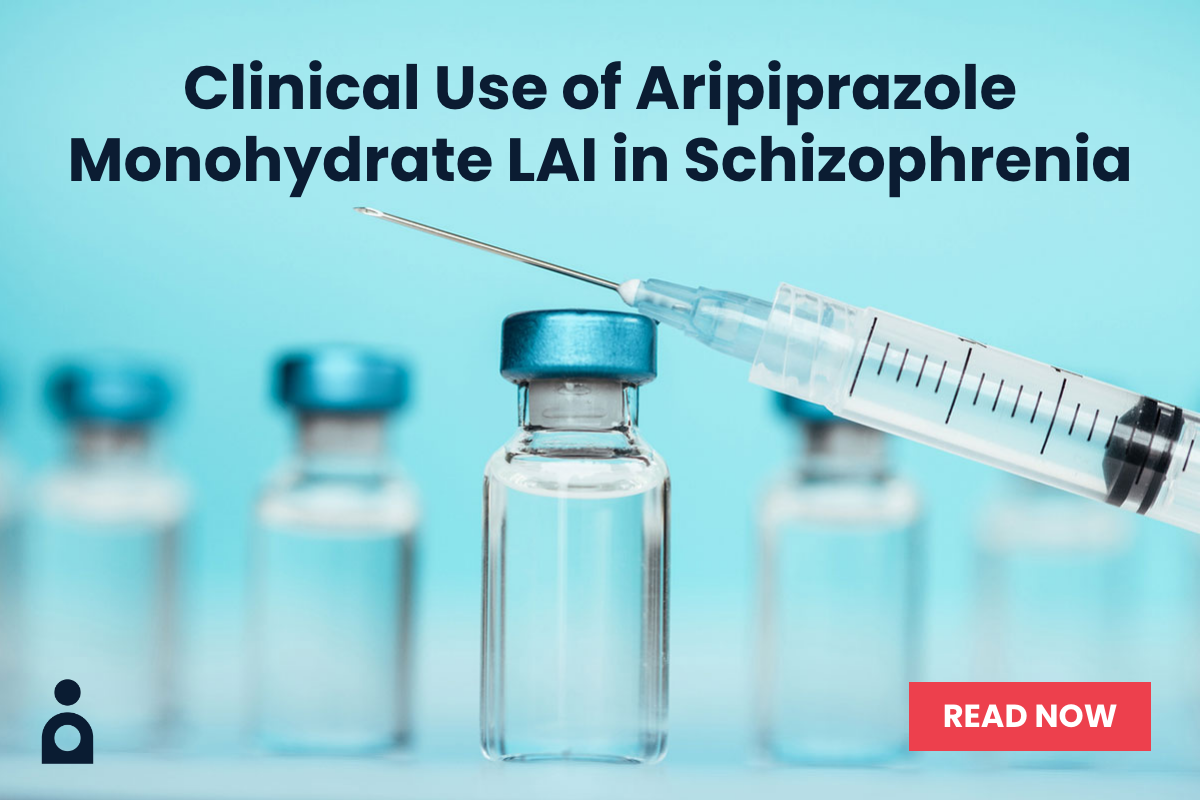Because this piece does not have an abstract, we have provided for your benefit the first 3 sentences of the full text.
Despite widespread awareness of their frequent co-occurrence, little is known about treatment of individuals with comorbid posttraumatic stress disorder (PTSD) and dissociative disorders. Patients with dissociative disorders do not respond well to standard exposure therapy, and few psychopharmacologic trials exist. Fluoxetine proved ineffective for depersonalization disorder, but paroxetine showed efficacy in decreasing dissociative symptoms in PTSD patients.’ ‹
This work may not be copied, distributed, displayed, published, reproduced, transmitted, modified, posted, sold, licensed, or used for commercial purposes. By downloading this file, you are agreeing to the publisher’s Terms & Conditions.

Despite widespread awareness of their frequent co-occurrence, little is known about treatment of individuals with comorbid posttraumatic stress disorder (PTSD) and dissociative disorders. Patients with dissociative disorders do not respond well to standard exposure therapy, and few psychopharmacologic trials exist.1 Fluoxetine proved ineffective for depersonalization disorder,2 but paroxetine showed efficacy in decreasing dissociative symptoms in PTSD patients.3 There are few modern reports about the rare conditions of dissociative amnesia and its DSM-5 subtype, dissociative fugue, although studies estimate prevalence anywhere from 0.2%-1.8%.4,5 Dissociative disorders are often poorly understood and skeptically viewed despite neurobiological correlates.6 The following case describes a patient with long-standing PTSD and dissociative symptoms including fugue, who responded robustly to a combination of sertraline and prazosin over a brief period.
Case report. Mr A, a 63-year-old Ethiopian man with no past psychiatric history, was referred to the psychiatry clinic at the homeless shelter where he had been living for 5 months after an initial medical evaluation revealed episodic memory loss. Psychiatric evaluation in January 2012 revealed that he had sought asylum in the United States in 1982 at age 33 years as an outspoken critic of the communist government that took over Ethiopia in 1974. In 1976, multiple friends and family members were shot in front of him, and he was sent to an army camp. However, he escaped en route during an ambush.
After arriving in the United States, Mr A worked the majority of his subsequent life in various jobs, for example, as a dishwasher, custodian, and postal worker. Since 1996, he described getting fired frequently for "walking out" for 2-3 days at a time, but he could not describe what he did or where he went. More recently, he noted longer, discrete periods of forgetting. He described 3 episodes in 2007, 2009, and 2011 lasting up to 3 months after which he "woke up" and did not recognize where he was. In 1 episode, he described working at a gas station in Los Angeles and then "waking up" in Las Vegas after being hit by a bus.
Mr A met DSM-IV criteria for PTSD and major depressive disorder, describing frequent daily flashbacks and nightmares, hypervigilance, poor sleep, depressed mood, low energy and appetite, anhedonia, and passive suicidal ideation with prior thoughts to jump off a bridge. He described daily episodes during which he would sit in a chair and lose hours being "busy in mind."
He was started on treatment with sertraline 50 mg, which was titrated to 150 mg over 1 month, and prazosin 1 mg titrated to 4 mg over 2.5 months. After 3 months of treatment, Mr A noted significant improvement in his PTSD and affective symptoms. He declined psychotherapy and further medication titration, stating he was doing well. He began swimming, going to the senior center, and socializing with others. He reported no further fugue episodes and noted significant improvement in his memory and dissociative symptoms. Within 1 year, he obtained disability benefits and moved out of the homeless shelter into his own residence. Contact with the patient was lost at this time, although it would have been ideal to continue tracking his progress to monitor for return of a fugue state.
Unfortunately, Mr A suffered for years before he was appropriately diagnosed and treated. Others have noted the high prevalence of posttraumatic psychiatric symptoms in nonpatient groups of resettled populations.7 Avoidant coping styles have been associated with higher rates of PTSD and dissociation in refugees, and patients may not present with typical complaints.8 It is essential to screen for PTSD and episodic dissociation in refugees who have never received treatment, even if they emigrated years ago. Dissociative fugue should remain a differential diagnosis in atypical populations, even in elderly men with adult trauma. It is unclear whether peritraumatic or persistent dissociation is more predictive of developing PTSD,9,10 but in this case, persistent dissociation was correlated with severe symptomatology and fugue. Despite research being limited for pharmacologic treatment of dissociative disorders, this case demonstrates that some evidence-based medications for PTSD may be effective.
REFERENCES
1. Brand BL, Lanius R, Vermetten E, et al. Where are we going? an update on assessment, treatment, and neurobiological research in dissociative disorders as we move toward the DSM-5. Trauma Dissociation. 2012;13(1):9-31. doi:10.1080/15299732.2011.620687
2. Simeon D, Guralnik O, Schmeidler J, et al. Fluoxetine therapy in depersonalisation disorder: randomised controlled trial. Br J Psychiatry. 2004;185(1):31-36. PubMed doi:10.1192/bjp.185.1.31
3. Marshall RD, Lewis-Fernandez R, Blanco C, et al. A controlled trial of paroxetine for chronic PTSD, dissociation, and interpersonal problems in mostly minority adults. Depress Anxiety. 2007;24(2):77-84. PubMed doi:10.1002/da.20176
4. Igwe MN. Dissociative fugue symptoms in a 28-year-old male Nigerian medical student: a case report. J Med Case Reports. 2013;7(1):143. PubMed doi:10.1186/1752-1947-7-143
5. MacPhee E. Dissociative disorders in medical settings. Curr Psychiatry Rep. 2013;15(10):398. PubMed doi:10.1007/s11920-013-0398-8
6. MacDonald K, MacDonald T. Peas, please: a case report and neuroscientific review of dissociative amnesia and fugue. J Trauma Dissociation. 2009;10(4):420-435. PubMed doi:10.1080/15299730903143618
7. Carlson EB, Rosser-Hogan R. Trauma experiences, posttraumatic stress, dissociation, and depression in Cambodian refugees. Am J Psychiatry. 1991;148(11):1548-1551. PubMed
8. Finklestein M, Laufer A, Solomon Z. Coping strategies of Ethiopian immigrants in Israel: association with PTSD and dissociation. Scand J Psychol. 2012;53(6):490-498. PubMed doi:10.1111/j.1467-9450.2012.00972.x
9. Briere J, Scott C, Weathers F. Peritraumatic and persistent dissociation in the presumed etiology of PTSD. Am J Psychiatry. 2005;162(12):2295-2301. PubMed doi:10.1176/appi.ajp.162.12.2295
10. Bryant RA. Does dissociation further our understanding of PTSD? J Anxiety Disord. 2007;21(2):183-191. PubMed doi:10.1016/j.janxdis.2006.09.012
Drug names: fluoxetine (Prozac and others), paroxetine (Paxil, Pexeva, and others), prazosin (Minipress and others), sertraline (Zoloft and others).
Corresponding author: Dorothy Liu-Barbaro, MD, Neighborhood Healthcare, 855 E Madison Ave, El Cajon, CA 92020 ([email protected]).
Author affiliations: Neighborhood Healthcare, El Cajon, California (Dr Liu-Barbaro), and Department of Psychiatry, University of California, San Diego (Dr Stein).
Submitted: June 22, 2014; accepted November 7, 2014.
Potential conflicts of interest: None reported.
Funding/support: None reported.
Online ahead of print: June 9, 2015 (doi:10.4088/JCP.14cr09334).
J Clin Psychiatry 2015;76(7):958.
© Copyright 2015 Physicians Postgraduate Press, Inc.
This PDF is free for all visitors!




